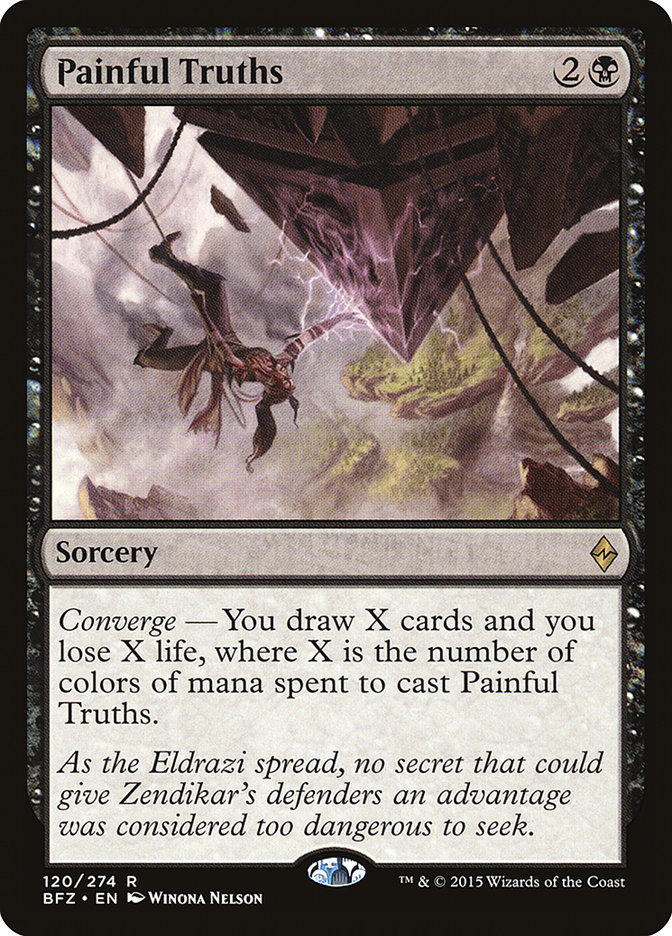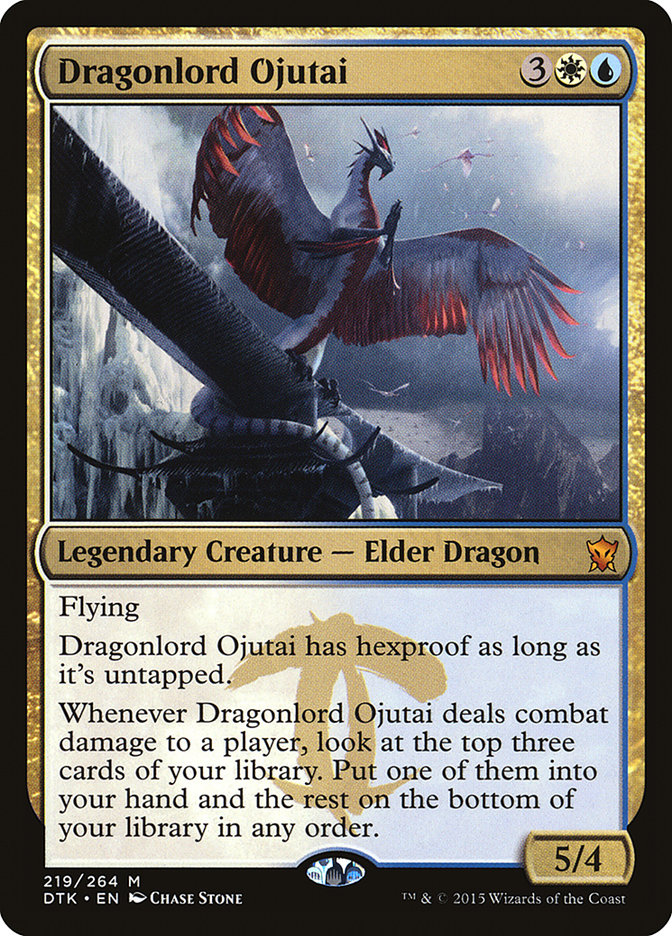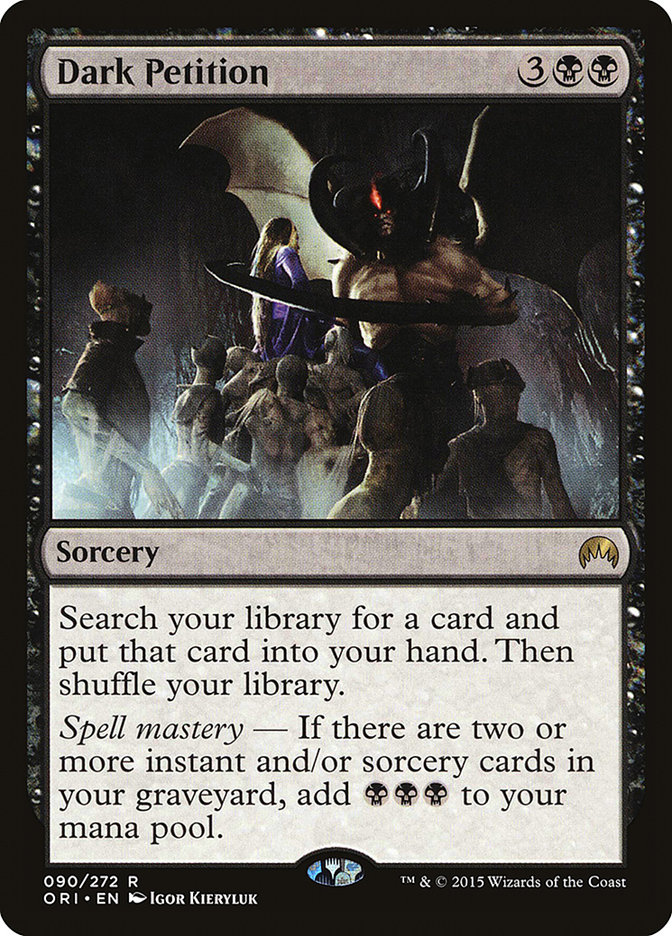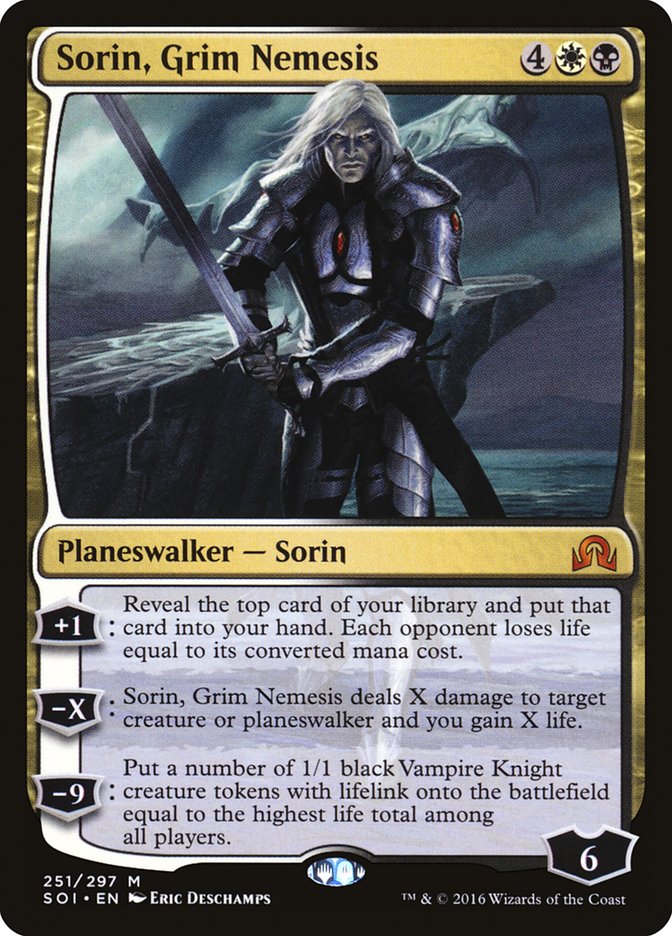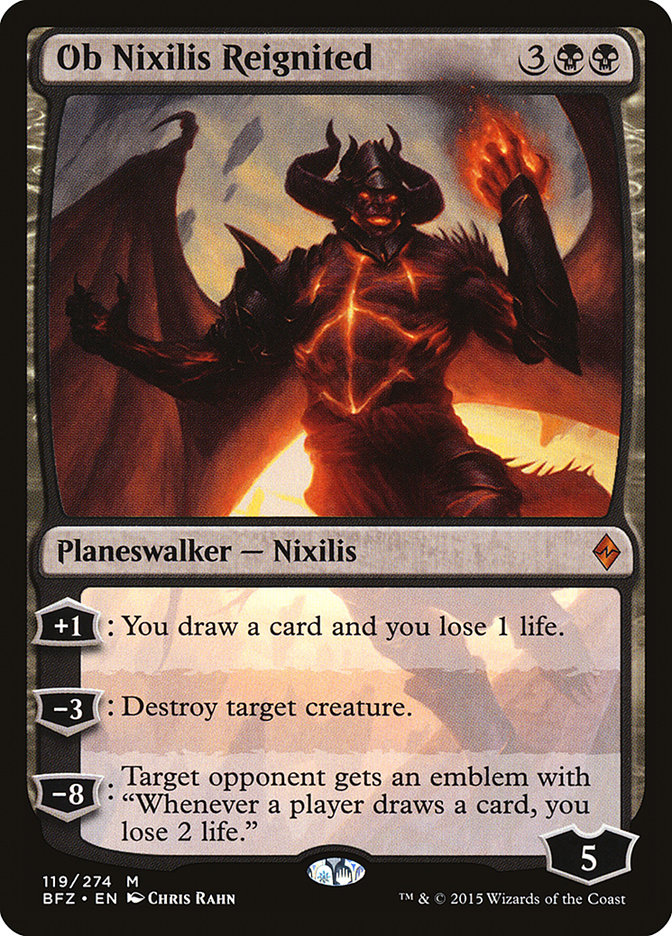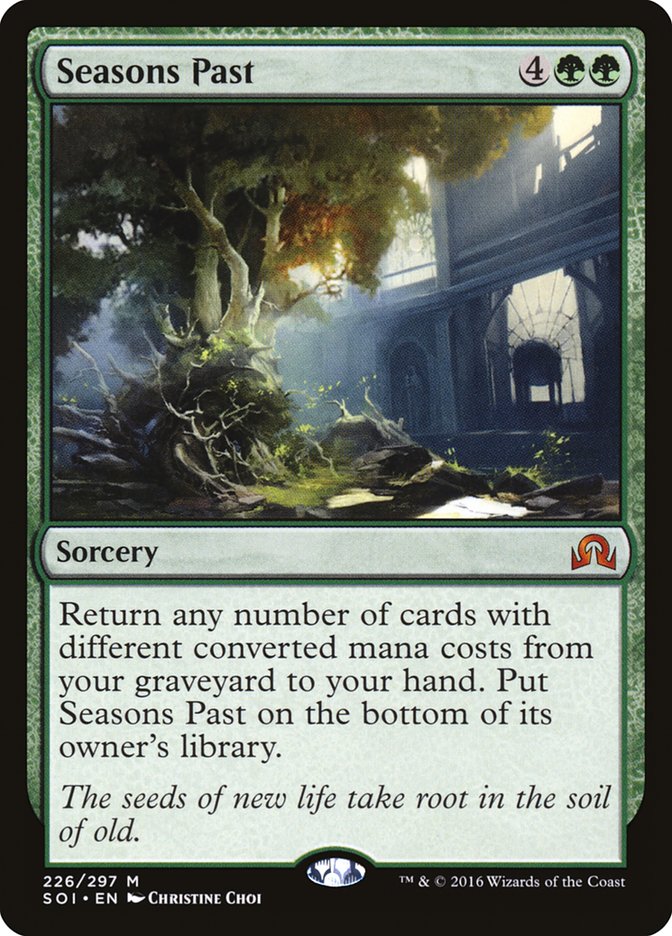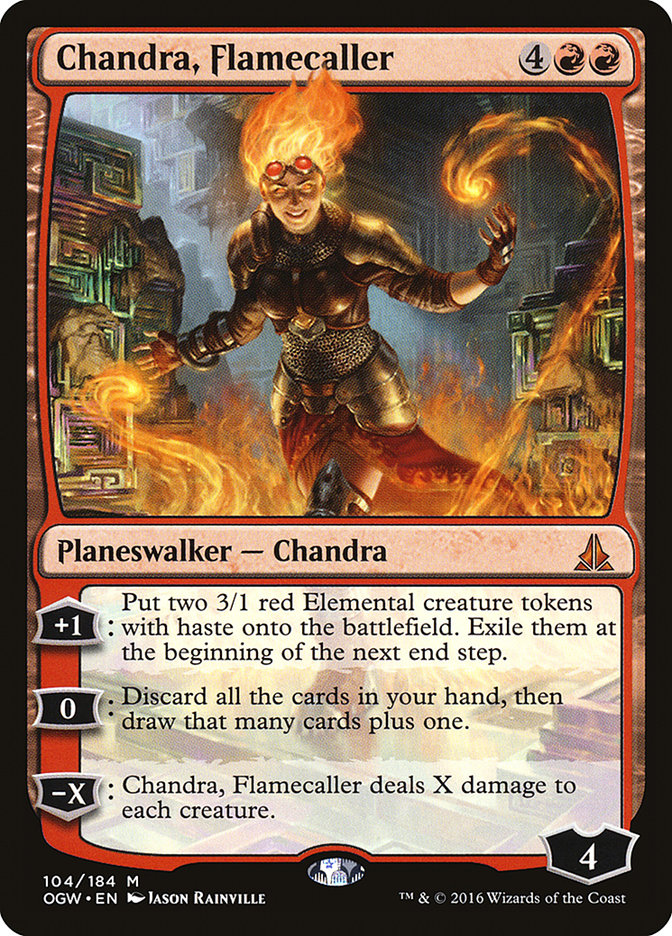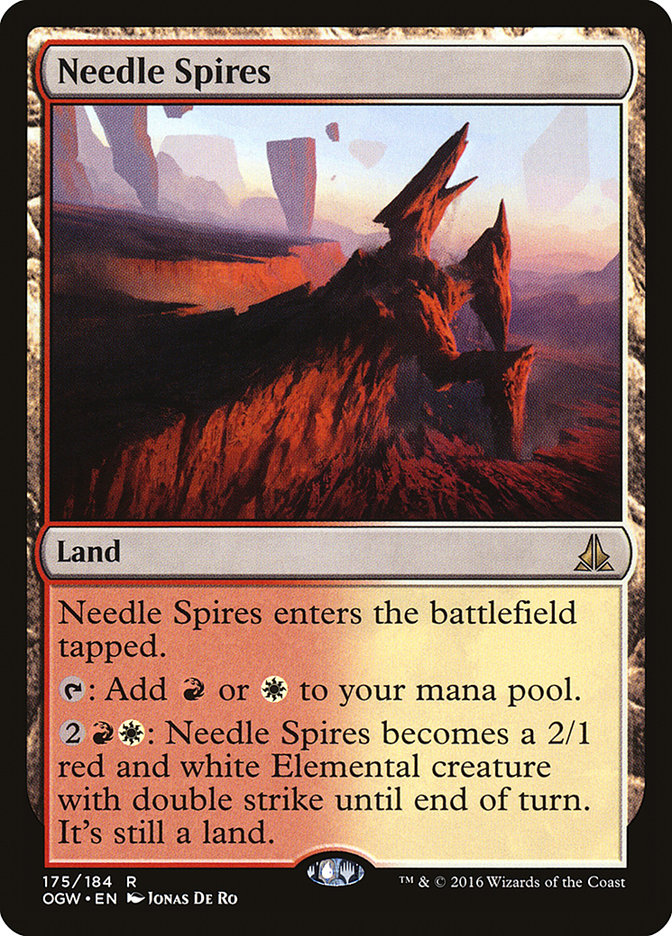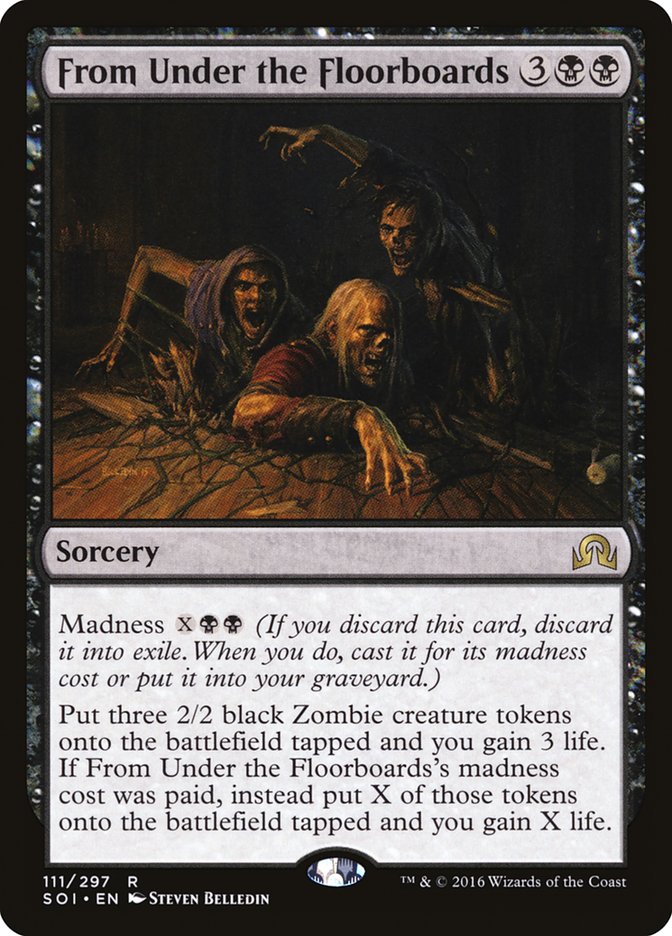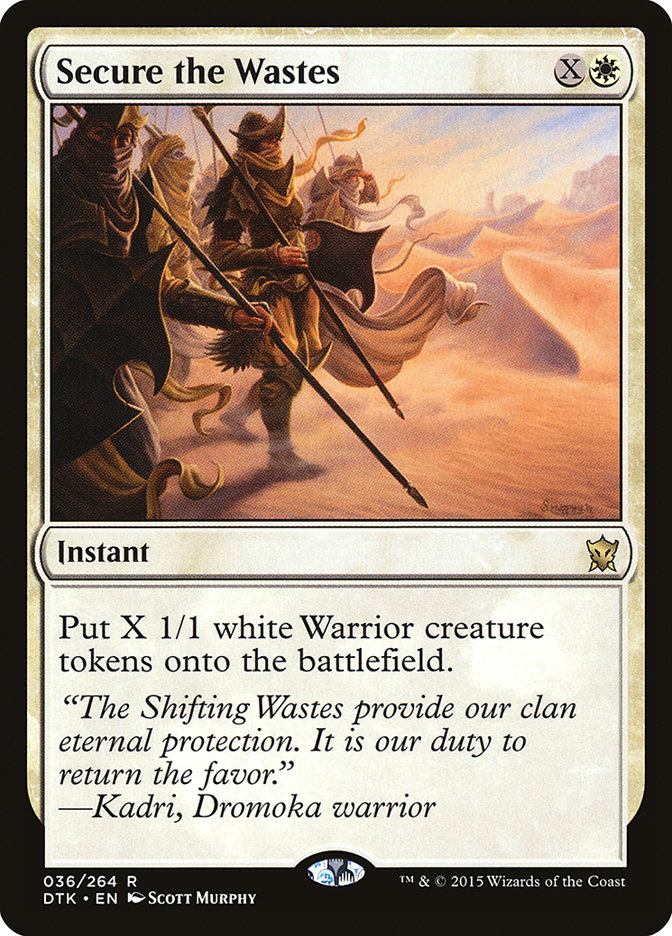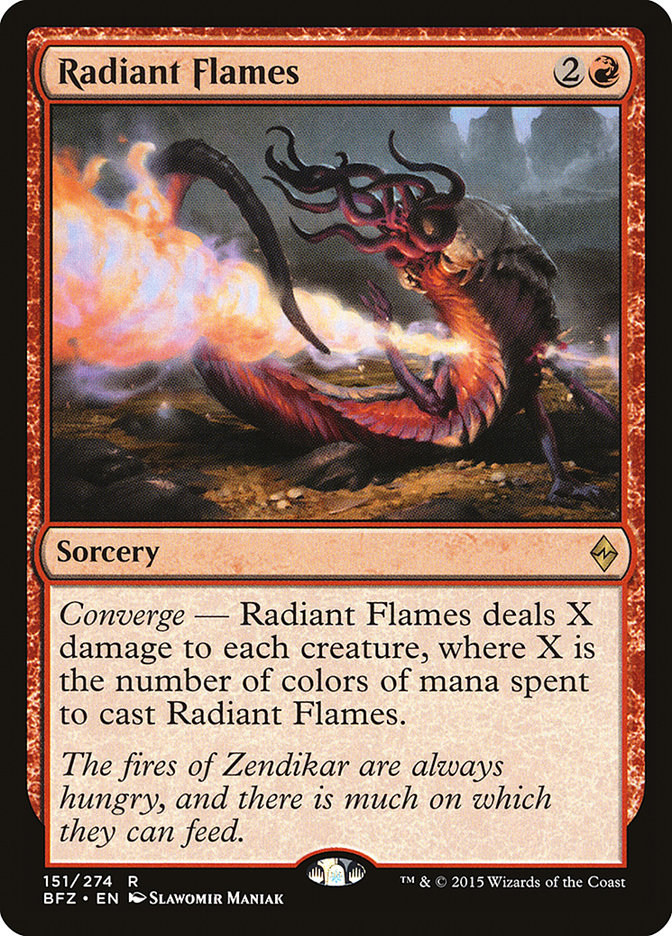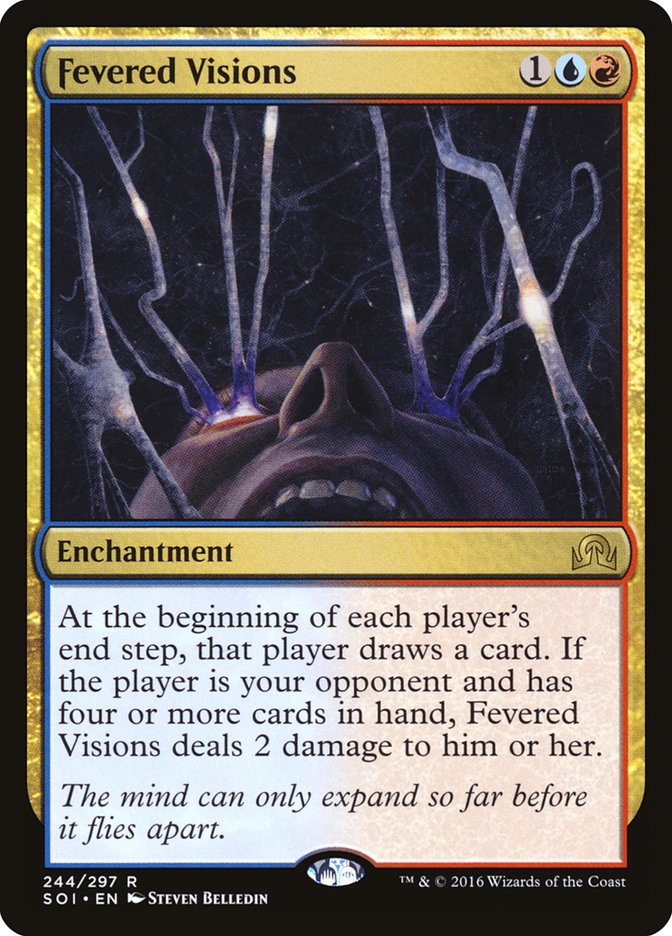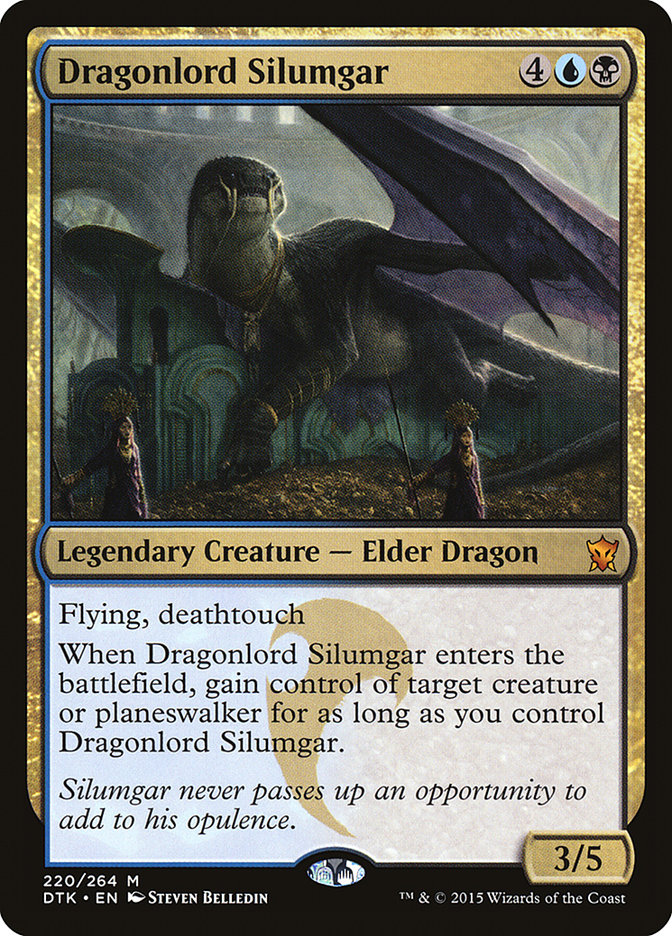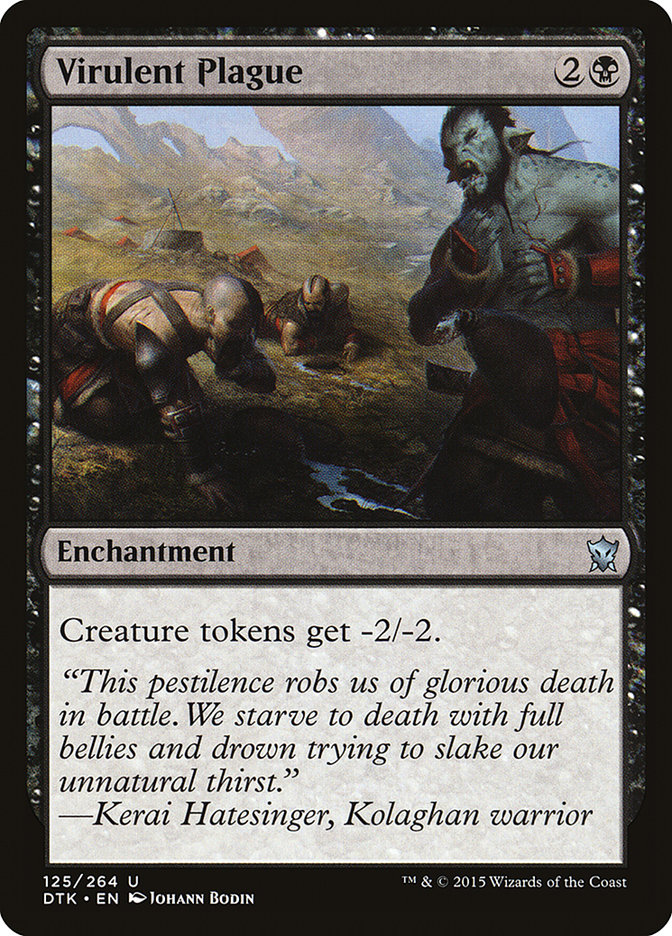Grixis has helped propel me to high levels of play in recent tournaments. I stopped playing Esper for a few reasons. First, the deck took too long to close games. At Grand Prix Toronto I found myself going to time, or very close to it, round after round.
For those who know me personally, or have seen me play, you all know that I play as fast as the wind. I tried Esper with planeswalkers and with Dragons, and determined that these decks have a very difficult time dealing the deathblow. Esper Dragons obviously has the ability to slay an opponent more swiftly than its planeswalker counterpart, but even with the might of Dragonlord Ojutai, the games drag out.
Esper was the color combination hit the hardest by the loss of Dig Through Time, and Painful Truths or Read the Bones as a replacement hasn’t been the same. This is the other reason why Esper had to be put down temporarily. Silumgar’s Scorn with Dragons is a pipe dream without strong card draw. It may work from time to time, but control thrives on consistency. The ability to extract a Dragon or counterspell from the top seven cards was too powerful of an effect to lose for the Esper Dragons strategy. I know there was a GP win with Esper Dragons and a few medium-low finishes since, but I feel strongly about the inherent weaknesses of the deck more than ever.
Esper Planeswalkers has it even worse, with poor finishes outside of the great Seth Manfield, weak planeswalkers, card draw woes, and a void in the finisher department. The move to Grixis Control was an attempt to try a more mainstream approach, taking the Oliver Tiu GP Toronto Top 8 list and making a few improvements.
I added maindeck Dark Petitions and fixed the manabase, and the deck performed exactly how I had envisioned it. The power of control with the heavy removal, card draw, big-bodied Snapcaster Mages, and the closing ability that red offers in control shells is showcased here.
Last Resort
The 13-2 run I had at #GPNY was the final hurrah for my unique take on control decks. I had a friendly agreement with my best friend Brian Braun-Duin that would shape my competitive future going forward. If I scrubbed out of that tournament (earning less than a 13-2 record), then I would have to play every list, in every format, that BBD plays for the rest of the calendar year. I wanted to get to the bottom of my limited success in the last few years.
There were two plausible scenarios. The first scenario is I’m actually kind of mediocre in the skill department of my favorite game. I never have claimed to be one of the best; however, I’d like to think that when wielding Islands I am a force on the tournament scene.
Brad Nelson, Mike Sigrist, and many other friends I have in the Magic community have told me that a second scenario is more accurate: the decks I have played at many competitive events weakened my chances for victory. I love all things control, but for the last few years I’ve bottlenecked myself into an Esper-In-All-Formats mentality. It’s not because I am afraid of change, or don’t have thousands of ideas for new control decks, but because I fell in love with the unique combination of removal, card advantage, and win conditions.
Esper has provided me with fantastic options on the back of Dig Through Time and Sphinx’s Revelation in recent years; however it’s not always the best choice for each tournament. I honestly believe that each format can have a control powerhouse present, but some formats call for Grixis, Bant, U/B, U/R, W/B, and the list goes on.
A perfect example is the efficiency of W/B Control and G/B/X Seasons Past in the current Standard. These are two ridiculous control decks that don’t require any Islands. Even my choice of Grixis Control barely requires the power of blue and only calls upon it to summon Jace, Vryn’s Prodigy. I am playing Grixis Control at #GPPIT next week, but if the deck begins to struggle, you’d better believe I’ll switch it up. Esper is still my passion and favorite set of colors; however, my success this year will continue on the back of adaptability and change.
Magic is a much more complex game than it used to be back in my day. Years ago I could toss the best spells with a win condition or two into a deck and wreak havoc at any tournament I traveled to. With spells in the control realm continuing to devolve, that simply isn’t the case anymore. The current Standard format demands a quick finish for control decks; otherwise, powerful midrange decks can easily catch up and overwhelm.
W/B Control obliterates an opponent with a Secure the Wastes into an Ormendahl, Profane Prince. G/B Seasons Past creates a nearly impenetrable loop of Seasons Past and Dark Petition to lock an opponent out of the game. Grixis Control fills the battlefield with large menace creatures and a Chandra, Flamecaller to seal the deal. These are the control requirements of the future if you want the best possible chance of success.
This doesn’t disqualify other types of control decks, even Esper Control; however, my personal belief has shifted some in light of some friends’ suggestions. I want to strive for success at least once more and I don’t want to limit my chances by playing lists that fall short of optimal. You won’t see me sleeving up any goofy BBD decks, because I escaped that nightmare with my success at GP New York. My tournament road will still be done my way, the control way, and I’ll be sure to give you all the lists and strategies implemented every step of the way.
Grixis for This Weekend
Creatures (12)
Planeswalkers (2)
Lands (26)
Spells (20)

This list is very similar to the versions I posted previously but has a little technology to patch up some of the rough matchups. The biggest change is the addition of two copies of From Under the Floorboards. I was super-excited when this card was released, sad when I couldn’t find space and had limited testing experience, and now happy after finally adding it to the team to help us fight some tough matchups. Humans used to be one of the easiest decks to beat for Grixis Control and still isn’t too bad; however, I found myself struggling against Needle Spires and Gideon, Ally of Zendikar after a nice sweep or two.
There hasn’t been a better play than creating a small army of Zombies that each trades with one of their creatures, as well as gaining life after initial stabilization. This card provides the pressure on planeswalkers, gains life, clogs the ground, and has unique upside with Jace, Vryn’s Prodigy later in the game. From Under the Floorboards has a lot of muscle for a reasonable mana cost and makes it easier to close the game out against some of the more aggressive decks.
There is always the threat of Declaration in Stone, but the removal in W/R Humans is already heavily taxed. They have to answer Kalitas, Traitor of Ghet; Jace, Vryn’s Prodigy; and Goblin Dark-Dwellers in order to continue their aggressive assault. The card has impressed me in testing versus the aggressive decks; however, it really shines against the slowest of decks.
From Under the Floorboards against W/B Control has been a gem in nearly every tested game with sideboard. There is no way your W/B Control opponent keeps in Languish Game 1, which gives us a chance to do our own Secure the Wastes. We don’t have the capability to create a 9/7 creature, but the six power for five mana is plenty of pressure for us. W/B Control is easily the worst matchup for Grixis Control and these Zombies help close the gap slightly.
The madness upside on the card can kill a control opponent at instant speed if the stars align, but that situation is very rare. The amount of removal W/B Control has after sideboarding is still staggering, so don’t expect some Jace, Vryn’s Prodigy magic too often.
The only other change to the deck was the removal of one Dark Petition for a second copy of Radiant Flames in the maindeck. Dark Petition has been fantastic and it was a tough cut, but I’m preparing for an onslaught of aggressive decks in the near future. It is a bit dangerous to have so few sweepers in the starting 60, and adding a Radiant Flames is our insurance against those matchups. That, combined with a Dark Petition and two Chandra, Flamecaller, gives us enough answers Game 1 to clear a messy battlefield if need be. I have found that Grixis Control doesn’t need a sweeper fairly often to defeat aggressive decks and can win with pinpoint removal with an appearance from Kalitas, Traitor of Ghet. Even though the games against these lightning-fast aggressive decks are winnable, I always prefer to take the safest route in a fifteen-round tournament.
Areas of Strength and Weakness
I have played many games with this deck and have discovered the various ups and downs from choosing this unorthodox method of control.
The biggest weakness of Grixis Control is the manabase, which can cause a few mulligans here and there, or even game losses. That risk is one you have to be willing to take, because the deck does not operate well without Jace, Vryn’s Prodigy, a few Negates, and the powerful Dragonlord Silumgar. I tried a B/R Control version and it felt like a weakened W/B Control deck, all of the lumps of removal against no threats without the ability to rip a Secure the Wastes for the win. Grixis Control’s mana is risky, but our ability to loot early and the use of Read the Bones makes it function at a high level most of the time.
The matchups for Grixis Control are well-defined at this point in the Standard metagame. G/W Tokens, R/G Ramp, G/B and Abzan Rite, Bant Company, G/W Company (Humans), Naya Tokens/Planeswalkers, and B/G Seasons Past are all decks that this version of Grixis Control has favorable matchups against. Some of these matchups fall close to the 50% mark (Bant Company, G/W Company), but the post-sideboard games for each of these benefit the control mage.
The ability to shift into a deck with this many battlefield wipes or turn into a version of control that is all spot removal and disruption makes Grixis Control a juggernaut in a world of decks just listed. The easiest matchups for this list are those decks that fall to the combination of Radiant Flames; Languish; Kalitas, Traitor of Ghet; Chandra, Flamecaller; and the powerful removal that can be recast by Goblin Dark-Dwellers. These decks have to win with a strategy that calls for battlefield saturation, which is the best-scenario for wielders of Grixis Control. With this being the easiest set of decks to defeat, it is pretty clear what we want to avoid.
The hardest decks for us to defeat are W/B Control, W/B Midrange, Esper Control, Esper Dragons, U/R Ulamog, U/R Flyers, and other various decks with heavy control elements or the card Fevered Visions. I was lucky enough at GP Costa Rica to defeat Tomoharu Saito piloting Jeskai Dragons, a U/R Ulamog player on the back of multiple Transgress the Minds and Infinite Obliterations, and another Jeskai Dragons list with three copies of Fevered Visions.
These styles of decks with Fevered Visions are absolute nightmares for Grixis Control because of our complete lack of answers to enchantment removal. The Howling Mine effect continues for both players, but eventually the repeated two damage taken defeats the control mage without white in his or her deck. There aren’t any real sideboard solutions to fix this matchup outside of using Negate or hand disruption to prevent its very existence.
The bad matchups listed also contain a theme of control that we wish to avoid. It is a tough pill for me to swallow, knowing that control is now my worst matchup. I have thrived on being able to defeat all those control mages that step up to this old mage with my experience in the archetype, but this deck doesn’t have the tools to be favored in the slightest.
W/B decks of all kinds take advantage of our limited answers to a Westvale Abbey and the flipped monstrosity that appears soon after. Dragonlord Silumgar, Virulent Plague, Negate, and hand disruption all help combat this menace, but we are definitely the underdogs in this fight. This doesn’t mean you should have a panic attack when you see a Shambling Vent, but just be aware that your play has to be immaculate to walk away with a victory.
The sideboard has a few new pieces of technology and enough firepower to slay a Dragonlord Ojutai for one red mana, a three-mana enchantment to temporarily lock down tokens, and an array of discard to get ahead on the battlefield with a Goblin Dark-Dwellers or two in order to defeat the control opponent. Good luck this weekend in Orlando, my fellow control mages, and win #SCGORL for Team Control!


